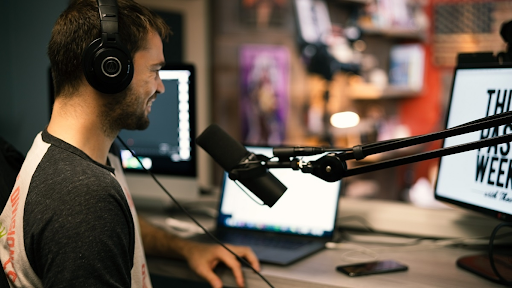Are you interested in starting a podcast but don’t know how to get started? Don’t worry, you’re not alone! A lot of people are intimidated by the process of starting a podcast. It can seem daunting at first, but it’s not as difficult as it seems.
First of all, you must believe in yourself and tune in. A hot tub is a great option for an energy boost that will help you in your endeavors. You can also add accessories for even more enjoyment. Check hot tub accessories Canada to find the perfect additions for your device.
So, here we will discuss 8 simple ways to start a podcast with no audience. By following these tips, you will be well on your way to starting a successful podcast.
8 Simple Ways to Start a Podcast With No Audience
There’s no need to be discouraged if you don’t have an audience built up when you start your podcast. These eight simple tips will help you get started and begin building that listener base.
Planning Your Podcast
Before you start your podcast, it’s important to plan out what you want to achieve with it. This will help guide your decisions when it comes to content, format, and promotion.
What’s Your Podcast for?
Are you looking to start a business podcast? A personal finance podcast? A comedy podcast? Knowing what your focus is will help you determine the content, tone, and style of your show.
Who is Your Podcast for?
Your podcast should be for a specific audience. You can’t please everyone, so don’t even try. When you know who your podcast is for, it becomes easier to create content that resonates with them.
It will also help you when it comes to marketing. If you know your target audience, you can tailor your marketing efforts specifically to them. For example, if you’re targeting stay-at-home moms with a parenting podcast, you might want to focus on online parenting communities and forums.

Decide on the Podcast Format
The next step is to decide on the format of your podcast. There are a few different formats to choose from: interview, solo show, panel discussion, etc.
Going Solo
If you’re going solo, there are a few things to keep in mind. First, come up with a solid concept for your podcast and make sure it’s something you’re excited to talk about. Second, make sure you have the equipment and knowledge necessary to produce a high-quality show. Finally, create an outline for each episode and make sure you stick to it.
Cohosting
One of the simplest ways to start a podcast with no audience is by teaming up with another podcaster. Cohosting can help you share the workload and reach new listeners. Plus, it’s a great way to network and learn from others in the industry.
If you’re looking for a cohost, consider reaching out to other podcasters in your niche. You can find them on social media or through online forums and communities.
Roundtable
If you’re looking for a more casual podcast experience, roundtable discussions can be a great way to start a podcast with no audience. This type of podcast is typically hosted by one or two people and features several guests who all take turns talking about a topic. Roundtable podcasts are perfect for discussing current events, sharing personal stories, or just chatting with friends.
The Interview Show
An interview show format can be a great way to get started if you have no audience. This type of show involves interviewing guests about their work or interests. You can find potential guests by looking for people who have been featured in publications or online, or by contacting local businesses and organizations to see if they’d be interested in being interviewed.
Preparing Your Podcast
Create Cover Art
Your podcast cover art is the first thing people will see when they come across your show. You must make a good impression! Make sure to use high-quality images and be creative with your design.
Get Some Intro Music
One of the best things you can do to make your podcast stand out is by adding intro music. This will give your show a more professional feel and make it easier for listeners to know when your episode is starting. You can find royalty-free music online or create your intro music with software like GarageBand.
Get Your Recording Equipment
Also, you need to get recording equipment. This can be anything from a simple microphone to a full audio production suite. The important thing is that you are comfortable with the tools you are using and that they produce high-quality results.
Recording Your First Episode

The first thing you need to do is record your first episode. This can be a little daunting, but it’s not as bad as it seems. Just make sure you have all of your equipment ready and practice a few times before recording the actual episode.
Write a Podcast Outline
This will help you stay on track and ensure that your podcast has a cohesive flow. It can also help you determine the structure and length of your episodes.
Pick a Place to Record
If you have the means, it’s best to record in a professional studio. However, if you’re just starting, your home will do just fine.
Make sure you pick a quiet place with minimal distractions. If kids or pets are running around, they may end up making an appearance on your podcast!
Editing and Uploading Your First Episode
Now that you have recorded your podcast, it’s time to edit it. This is where you’ll clean up any mistakes and make sure the audio sounds smooth.
Tips for Editing a Podcast Episode
1. Set yourself up for success by creating a clear plan and timeline
Editing a podcast episode can be a lot of work, but it’s worth it to make sure your listeners have the best experience possible. By taking the time to plan out your editing process and setting yourself deadlines, you’ll ensure that your episodes are high quality and ready for release on time.
2. Use quality over-ear headphones to edit your podcast
When you’re editing your podcast, it’s important to have a good quality listening experience. This means using headphones that will give you an accurate representation of what your listeners will hear. Over-ear headphones are a great option for this, as they provide noise isolation and allow you to focus on the audio content without any distractions.
3. Mute inactive tracks
When you’re editing your podcast, it’s important to make sure that all of the audio content is clear and easy to understand. This means muting any inactive tracks so they don’t interfere with the main audio. You can do this by selecting the track and hitting “m” on your keyboard or by clicking the mute button in your editor.
4. Use shuffle edit mode to quickly rearrange clips
If you need to move a clip from one place to another, the shuffle edit mode can be a great time-saving tool. This mode allows you to quickly and easily move clips around without having to worry about cutting them or losing any audio content. To access this mode, press “shift+z” on your keyboard.
5. Avoid over-editing your podcast
It’s easy to get carried away when you’re editing your podcast and adding in too many effects or making too many changes. But remember that the goal is to create a high-quality episode, not to turn it into a completely different show. Try to avoid over-editing your podcast and focus on making simple changes that improve the quality of the episode without changing its overall tone.

Submit Your RSS Feed to Podcast Directories
When you’re ready to launch your podcast, make sure you have the following in place: a website (or at least a landing page), an RSS feed, and an embeddable player.
- Website
A website is a necessity for any business, and a podcast is no exception. You’ll need a place to host your episodes, show your listeners how to subscribe, and provide contact information. A simple landing page with all of this information will do the trick.
- RSS feed
For people to subscribe to your podcast, you need an RSS feed. This is a special file that contains all of the information about your podcast, including episode titles and descriptions, links to the audio files, and artwork. You can create a feed with a service like Feedburner or Podbean.
- Embeddable player
An embeddable player allows listeners to play your episodes right on your website. They can also subscribe to your podcast and download episodes directly from the player. There are many free players to choose from, such as SoundCloud or Spreaker.
Launching Your Podcast
When you’re ready to launch your podcast, make sure you have the following in place: a website (or at least a landing page), an RSS feed, and an embeddable player.
Marketing Your Podcast
When you’re starting a podcast with no audience, marketing can be difficult. You can’t just post about your podcast on social media and hope people will find it. You need to actively promote your podcast to get listeners.
Here are a few ways to market your podcast:
- Create a website or landing page for your podcast and include links to it in all of your marketing materials.
- A guest blog about your podcast on other websites.
- Write articles about your podcast for industry publications.
- Record a video trailer for your podcast and post it on YouTube and other video-sharing sites.
- Engage with listeners and followers on social media platforms like Twitter, Facebook, and Instagram.
- Participate in podcasting forums and online communities.
- Organize meetups and events for your podcast listeners.
By using these marketing strategies, you can increase the visibility of your podcast and attract new listeners. Eventually, as you gain a following you can work toward podcast monetization.
Conclusion
So there you have it: eight simple ways to start a podcast with no audience. These tips will help you get started and create content that engages listeners. Remember, the most important thing is to be authentic to yourself as a podcaster. With time and effort, you can build an audience around your show and make a real impact with your message.
Suggested:
Why Podcast is an Essential Marketing Tool?
The Ultimate Guide To Using Podcasting As A Marketing Tactic.
8 Reasons Why Influencers and Podcasters Should Transcribe Audio to Text.





 7 Domain Name Myths Every Web Designer Should Know
7 Domain Name Myths Every Web Designer Should Know